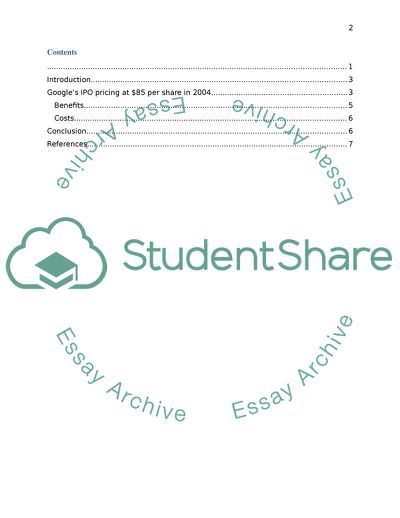Cite this document
(Corporate Finance - Evaluation of IPO pricing for Google Ltd based on Essay, n.d.)
Corporate Finance - Evaluation of IPO pricing for Google Ltd based on Essay. https://studentshare.org/finance-accounting/1803914-corporate-finance-evaluation-of-ipo-pricing-for-google-ltd-based-on-financial-theories
Corporate Finance - Evaluation of IPO pricing for Google Ltd based on Essay. https://studentshare.org/finance-accounting/1803914-corporate-finance-evaluation-of-ipo-pricing-for-google-ltd-based-on-financial-theories
(Corporate Finance - Evaluation of IPO Pricing for Google Ltd Based on Essay)
Corporate Finance - Evaluation of IPO Pricing for Google Ltd Based on Essay. https://studentshare.org/finance-accounting/1803914-corporate-finance-evaluation-of-ipo-pricing-for-google-ltd-based-on-financial-theories.
Corporate Finance - Evaluation of IPO Pricing for Google Ltd Based on Essay. https://studentshare.org/finance-accounting/1803914-corporate-finance-evaluation-of-ipo-pricing-for-google-ltd-based-on-financial-theories.
“Corporate Finance - Evaluation of IPO Pricing for Google Ltd Based on Essay”. https://studentshare.org/finance-accounting/1803914-corporate-finance-evaluation-of-ipo-pricing-for-google-ltd-based-on-financial-theories.


